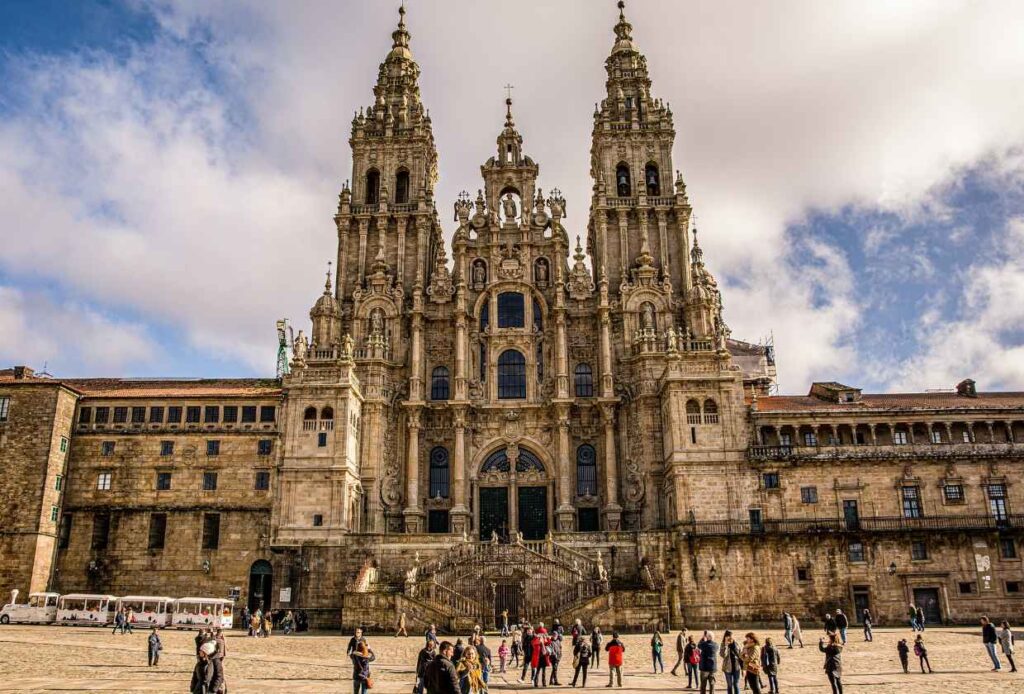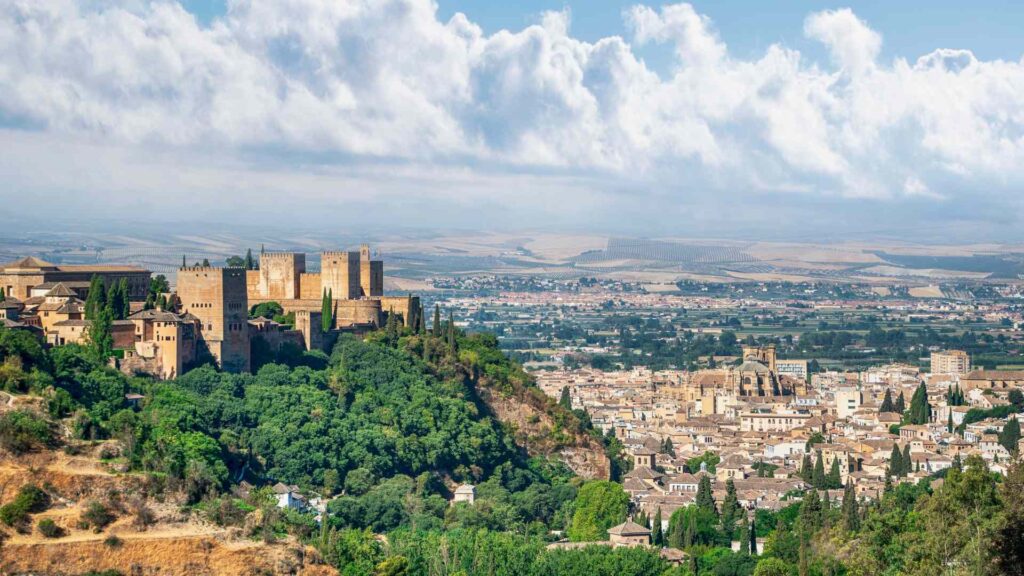Santiago de Compostela, the capital of Spain’s Galicia region, is a city steeped in history, culture, and charm. Known for its cobblestone streets, magnificent architecture, and vibrant community, it offers a unique blend of old-world appeal and modern conveniences. Whether you’re drawn by its historical significance, lush green surroundings, or welcoming atmosphere, Santiago de Compostela is a place that captivates newcomers and longtime residents alike.
What Is Santiago de Compostela Famous For?
Santiago de Compostela is most famous as the endpoint of the Camino de Santiago, a historic pilgrimage route that attracts travelers from around the globe. Its UNESCO-listed Santiago de Compostela Cathedral is a masterpiece of Romanesque, Gothic, and Baroque architecture. The city also boasts a rich culinary tradition, celebrated festivals like the Feast of Saint James, and a thriving arts and cultural scene.
Who Would Enjoy Living In Santiago de Compostela?
Santiago de Compostela appeals to those who value history, culture, and a slower pace of life. It’s ideal for:
- History Enthusiasts: The city’s rich past is evident in every corner, from ancient churches to medieval streets.
- Nature Lovers: Surrounded by lush landscapes and close to the Atlantic coast, it’s perfect for outdoor enthusiasts.
- Expats Seeking Community: With a welcoming local population and a growing expat presence, making connections is easy.
- Families: Excellent schools, safe neighborhoods, and a family-friendly atmosphere make it appealing to parents with children.
What Opportunities Are There To Make Friends In Santiago de Compostela?
Santiago de Compostela offers plenty of opportunities for expats to build a social network:
- Demographics: The city has a mix of young students, professionals, and families. The average age is around 45, with a significant student population due to the University of Santiago de Compostela.
- Expat Communities: While the expat population is smaller than in larger Spanish cities, it’s diverse, including people from the UK, Germany, and Latin America.
- Language: Spanish is essential for day-to-day life, but learning Galician can also be a great way to integrate. English is less commonly spoken outside tourist areas.
- Social Clubs and Events: Join groups like Internations Santiago or local language exchange meetups. Cultural festivals and community events also provide great opportunities to meet people.
How LBGQT+ friendly is Santiago de Compostela?
Santiago de Compostela, the capital of Galicia, is generally considered LGBTQ+ friendly, though its scene is smaller and more subdued compared to larger cities in Spain. The city is known for its rich history, cultural significance, and university presence, which contributes to a more progressive and open-minded atmosphere. Santiago de Compostela hosts an annual LGBTQ+ Pride event, which includes parades and cultural activities, helping to promote visibility and acceptance.
The LGBTQ+ community in the city is relatively small, but there are some LGBTQ+ bars, cafes, and venues where people can socialize. Public attitudes are generally respectful, and the city has a welcoming vibe for LGBTQ+ individuals, especially in more central areas where locals and students contribute to a more inclusive environment.
Overall, Santiago de Compostela is a safe and friendly city for LGBTQ+ individuals, with a growing but quieter scene compared to larger urban centers. It’s an ideal place for those seeking a more peaceful, culturally rich environment while still enjoying an open and tolerant atmosphere.
What Are Santiago de Compostela’s Main Residential Areas?
Casco Antiguo
The historic center is perfect for those who love old-world charm. With its narrow streets, stone buildings, and proximity to landmarks, it’s ideal for history buffs.
Ensanche
This modern area offers spacious apartments and a mix of residential and commercial spaces. It’s popular among professionals and families.
Conxo
A quieter, more residential area, Conxo provides a peaceful environment while still being close to the city center.
Vista Alegre
Located near the university, this neighborhood is vibrant and youthful, with plenty of green spaces and cultural activities.
What Are The Best Areas Of Santiago De Compostela For Expats?
- Casco Antiguo – Historical Charm: Ideal for those who appreciate culture and history.
- Ensanche – Modern Convenience: Perfect for families and professionals.
- Vista Alegre – Vibrant and Green: Great for students and young professionals.
Location And Accessibility Of Key Amenities
- Nearest beach: Playa de Carnota, approximately 50 km away.
- Nearest airports: Santiago-Rosalía de Castro Airport (15 km) and A Coruña Airport (67 km).
- Nearest international school: O Castro British School, Vigo (90 km).
- Nearest public school: CEIP Quiroga Palacios, within city limits.
- Nearest hospital: Hospital Clínico Universitario de Santiago, 5 km.
- Nearest railway station: Santiago de Compostela Train Station, centrally located.
What Are The Top-Rated International Schools In Santiago De Compostela?
While there are no international schools directly in Santiago, options nearby include:
- O Castro British School: A British curriculum school located in Vigo, offering education from early years to secondary levels.
- Colegio Internacional SEK-Atlántico: Located in Pontevedra, it offers an IB program.
Medical Care
Santiago de Compostela boasts excellent healthcare facilities. The public healthcare system, serviced by Hospital Clínico Universitario, is highly regarded. Private clinics, such as Hospital HM Rosaleda, provide shorter wait times and multilingual staff. English-speaking doctors are available but not widespread.
Transport Options
- Need for a car: A car is not essential in the city due to its compact size and efficient public transport.
- Parking availability: Limited in the historic center but more accessible in modern areas.
- EV Charging Coverage: Growing, with stations at major parking areas and near shopping centers.
How Accessible Is Public Transportation In Santiago De Compostela?
- Buses: Frequent and affordable, connecting neighborhoods and nearby towns.
- Trains: Regular services to major cities like Madrid and A Coruña.
- Taxis: Readily available and reasonably priced.
- Cycling: Dedicated bike lanes are expanding, making cycling a viable option.
The Top 10 Sports Facilities In And Around Santiago De Compostela
- Estadio Multiusos de San Lázaro: A stadium hosting football matches and athletic events.
- Piscina Municipal de Santa Isabel: Public swimming pools.
- Club de Tenis Santiago: Tennis and padel courts.
- Monte do Gozo Sports Complex: Multi-sport facilities.
- Centro Deportivo Galáctica: Gym and fitness center.
- Campus Vida Sports Center: Popular among university students.
- Golf Val de Rois: A scenic golf course nearby.
- CrossFit Compostela: High-intensity training programs.
- Polideportivo Fontes do Sar: Basketball and indoor sports.
- Alameda Park Trails: Ideal for jogging and walking.
The Most Popular Pastimes And Hobbies In And Around Santiago De Compostela
- Hiking: Trails like Monte Pedroso offer stunning views.
- Cycling: Popular along the Camino routes.
- Fishing: Available in nearby rivers and coastal areas.
- Food and Drink: Tapas tours and wine tastings are local favorites.
- Horse Riding: Equestrian centers in the countryside.
- Watersports: Coastal towns offer surfing and sailing.
The Flora And Fauna In And Around Santiago De Compostela
- Oak Trees: Common in the region’s forests.
- Eucalyptus: Found in abundance.
- Pilgrim’s Scallop: Symbolic and visible in local art.
- Wild Boar: Occasionally spotted in rural areas.
- Storks: Often seen nesting on tall buildings.
Neighborhood Characteristics
- Population of Santiago de Compostela: Approximately 96,000.
- Broadband and Mobile Coverage: Excellent, with fiber-optic options.
- Demographics and Community: A mix of locals, students, and expats.
- Integration Ease for Foreigners: Relatively easy with effort to learn Spanish.
- Safety Comparison With Other Areas in Spain: Very safe.
- Noise Levels: Quiet except during festivals.
- Popularity With Expats By Nationality: Mostly European expats.
Climate And Seasonality
- Year-round climate variations:
- Mild, rainy winters.
- Warm, pleasant summers.
- How busy is Santiago de Compostela in season?: Bustling with pilgrims and tourists.
- How busy is Santiago de Compostela out of season?: Quieter but lively.
Nightlife
The nightlife in Santiago de Compostela is vibrant yet relaxed. Bars like A Reixa and Modus Vivendi offer live music, while clubs like Sala Capitol attract younger crowds. Compared to larger Spanish cities, it’s more intimate and laid-back.
Restaurants And Bars
The culinary scene is diverse, from traditional Galician dishes like pulpo a la gallega to international cuisine. Popular spots include Abastos 2.0 for modern twists on local flavors and O Dezaseis for hearty traditional meals.
Shopping
Santiago de Compostela offers a mix of modern and traditional shopping experiences:
- High-End Shopping: Boutiques in Ensanche.
- Local Markets: Mercado de Abastos for fresh produce and crafts.
- Shopping Malls: As Cancelas for mainstream brands.
- Traditional Shops: Stores selling Camino souvenirs.
Property Information
Santiago de Compostela’s property market caters to various needs, from historic city center apartments to modern suburban homes. The city has seen moderate growth in property values over recent years, driven by its cultural significance and steady tourism.
Property price trends: Santiago de Compostela prices have shown a slight upward trajectory, with an increase of 0.98% from December 2023 to October 2024[4].
Distribution of property types:
Apartments: Common in the city center and surrounding areas
Townhouses: Less common, found in residential neighborhoods
Houses: Available in suburban areas and outskirts
Average price per square meter:
Apartments: €1,862 – €2,835
Houses: €1,470 – €1,862
Estimated rental costs:
1-bedroom apartment: €400 – €600 per month
3-bedroom house: €800 – €1,200 per month
Relative expense: 3/5 (Santiago de Compostela is moderately priced compared to other areas in Spain, with some premium properties in the historic center)
Investment potential: Santiago de Compostela offers steady investment opportunities, particularly in the rental market due to its status as a pilgrimage destination and university city[1][2].
Cost of Living compared to other areas in Spain:
Relative cost: 2/5 (Santiago de Compostela generally offers a lower cost of living compared to major Spanish cities like Madrid or Barcelona)
Employment Opportunities In Santiago De Compostela And Surrounding Areas
- Tourism: Hospitality jobs abound.
- Education: Teaching English is a popular choice.
- Healthcare: Opportunities in public and private sectors.
- Tech and Research: Positions linked to the university.
Pros And Cons Of Living In Santiago De Compostela
- Pros: Rich culture, safe, affordable, great food.
- Cons: Rainy weather, smaller expat community.
Sentiment Analysis And Reviews
- Positive Sentiments: Residents love the history and community spirit.
- Negative Sentiments: Some find the rain and slower pace challenging.
Conclusion
Santiago de Compostela is a charming city that offers a high quality of life. Its blend of history, culture, and community makes it a fantastic place to call home, especially for those seeking a peaceful yet enriching environment.
FAQs
Q: Is Santiago de Compostela expensive to live in? A: No, it’s relatively affordable compared to other Spanish cities.
Q: Do I need to speak Spanish to live there? A: Yes, Spanish is essential for day-to-day life.
Q: What is the weather like? A: Mild and rainy winters, warm summers.
Q: Is Santiago de Compostela family-friendly? A: Absolutely, with great schools and safe neighborhoods.



